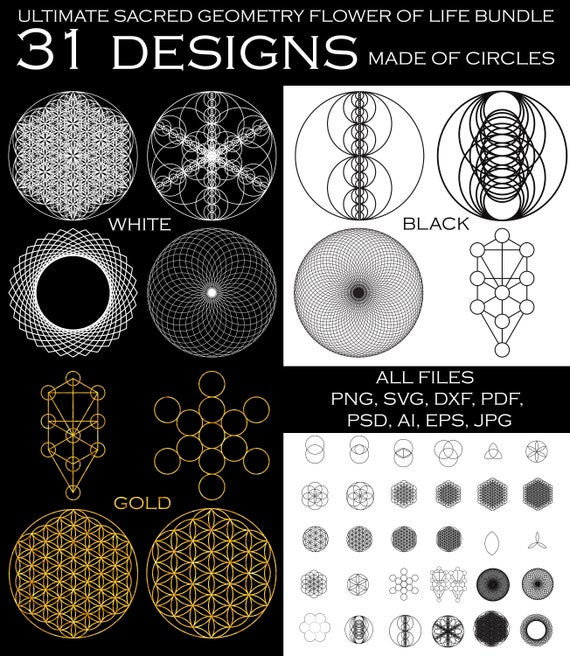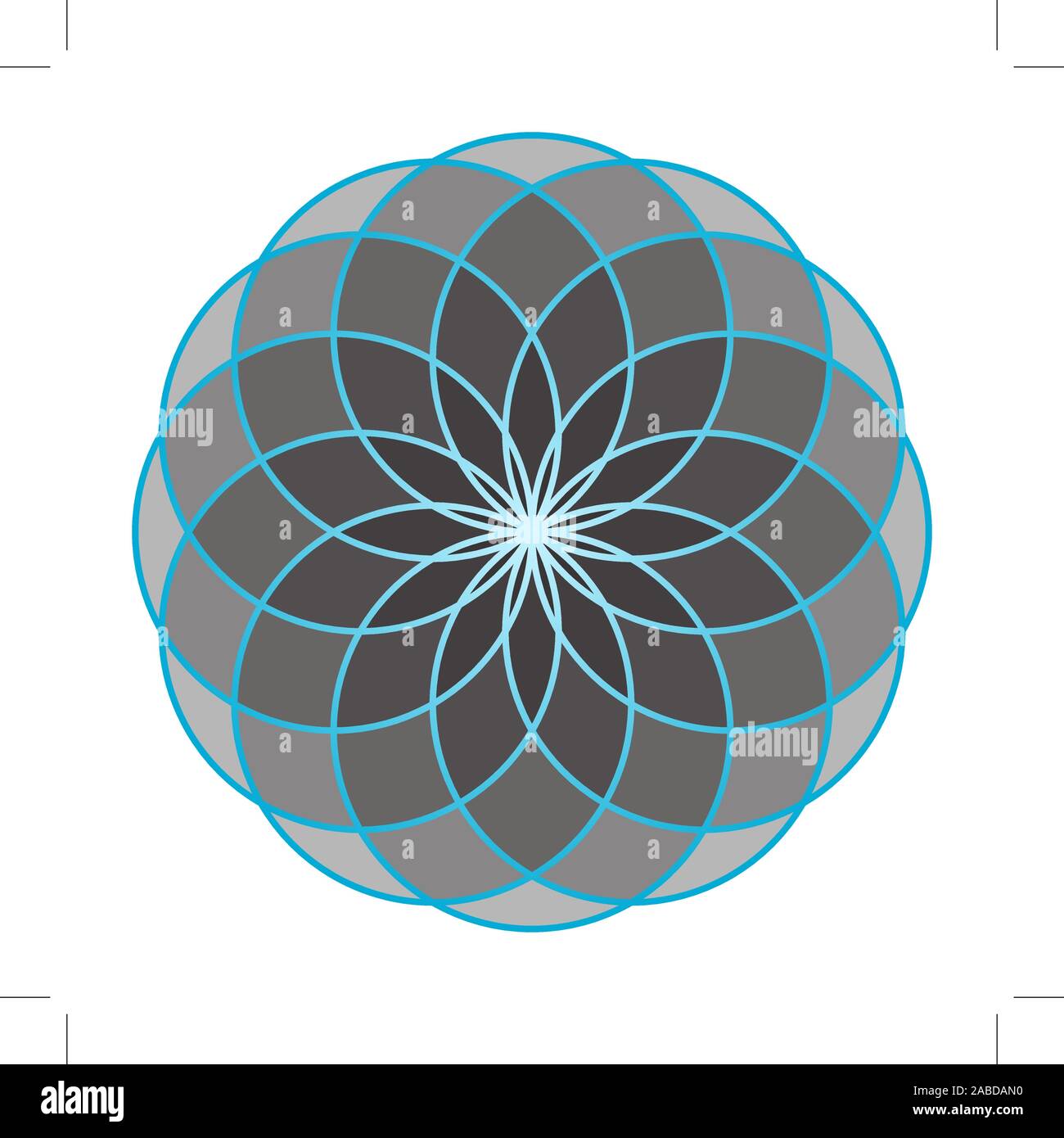The Complex Charm of Flower of Life Art: An Overview to Sacred Geometry in Modern Decor
The Blossom of Life art, soaked in historical value and abundant significance, acts as a compelling instance of exactly how sacred geometry can boost contemporary decor. This detailed pattern, composed of overlapping circles, not just mesmerizes the eye yet additionally invites reflection of unity and interconnectedness in our lives. As we explore its applications in contemporary settings, one may ask yourself exactly how such a classic style can change areas right into sanctuaries of serenity. Recognizing the nuances of including this ancient concept into your style might disclose unforeseen measurements of charm and definition.
Historical Importance of Blossom of Life
The Blossom of Life is not merely a geometric pattern; it holds extensive historic significance across different cultures and civilizations. This complex layout, composed of several overlapping circles, has actually been uncovered in ancient temples, manuscripts, and artifacts, showing its prevalent recognition and reverence throughout background. Especially, the Blossom of Life has appeared in the art and design of old Egypt, where it was often related to the sacredness of development and deep space.
In addition to its existence in Egyptian culture, the Blossom of Life can be mapped back to old Greece, where philosophers like Plato and Pythagoras utilized geometric types to clarify the universes, connecting mathematics to spirituality. This symbol has likewise been discovered in the Far East, especially in Buddhist and Hindu art, where it stands for the interconnectedness of life and the cycle of presence.
The sustaining nature of the Blossom of Life reflects its function as a global sign of consistency and unity. As societies have developed, this style has transcended its historical roots, remaining to inspire contemporary art and spiritual techniques, thereby preserving its significance across time and cultures.
Symbolism Behind the Style

The Flower of Life is typically connected with sacred geometry, suggesting that deep space is structured according to certain geometric principles. This belief suggests that the patterns located in nature, such as the branching of trees or the development of crystals, mirror a magnificent order. The layout is assumed to stand for the cycle of life, death, and regeneration, emphasizing the continuous nature of existence.
In various spiritual customs, the Blossom of Life is seen as a resource of divine energy and knowledge, functioning as a tool for reflection and contemplation. By including this symbol into art and design, individuals seek to invoke a feeling of consistency and equilibrium in their environments, getting in touch with the much deeper meanings embedded in the design. Thus, the Flower of Life transcends plain visual appeals, symbolizing profound spiritual importance.
Modern Applications in Design
In contemporary interior decoration, the Flower of Life concept has become a prominent decorative component, flawlessly mixing looks with deeper spiritual meanings. This complex pattern, composed of overlapping circles, symbolizes unity, interconnectedness, and the intermittent nature of life, making it an ideal option for contemporary spaces looking for harmony.
Inside designers incorporate the Flower of Life right into numerous applications, consisting of wall surface art, fabrics, and furniture style. Wall murals or printed canvases including this geometric pattern can act as striking prime focus, while toss pillows and rugs embellished with the concept include a subtle yet innovative touch to living areas. In addition, furniture items, such as coffee tables with decorative screens or etched designs, enhance spatial aesthetic appeals while advertising a sense of equilibrium.
The Blossom of why not try this out Life is likewise locating its way right into lighting components, where its forms can develop enchanting darkness that stimulate a feeling of harmony. Past plain decoration, these applications invite consideration and influence a link to deep space, raising the total atmosphere of any space. As the admiration for sacred geometry grows, the Flower of Life proceeds to reverberate within modern design, symbolizing both elegance and much deeper importance.

Creating Peacefulness With Sacred Geometry
Exactly how can sacred geometry promote a sense of serenity in our home? The principles of spiritual geometry, rooted in ancient customs, resonate with natural patterns and unified percentages found in deep space. By incorporating styles and shapes such as the Flower of Life, individuals can cultivate a calm setting that advertises balance and tranquility.
The Blossom of Life sign, identified by interconnected circles, embodies unity and the interconnectedness of all living points - Sacred Geometry Flower of Life. This detailed style not just astounds the eye yet likewise encourages mindfulness and representation. When tactically positioned in a home, such depictions can function as prime focus that draw attention away from disorder, welcoming a moment of calm

Incorporating sacred geometry right into décor can enhance the go to this web-site psychological environment of an area. The balanced and in proportion nature of these designs can stimulate sensations of stability and comfort. Additionally, the repetitive patterns found in spiritual geometry can create a reflective aesthetic experience, helping to minimize stress and anxiety.
Ultimately, embracing sacred geometry in our space allows us to develop a haven of peace, promoting a much deeper connection with ourselves and the world around us.
Tips for Incorporating Blossom of Life
The Flower of Life sign can be perfectly integrated into different facets of home design to boost both aesthetic charm and psychological health. One efficient straight from the source way to include this sacred geometry is through wall art. Choose large canvas prints or mounted pieces including the Blossom of Life layout, which can function as prime focus in living areas or meditation areas.
Textiles offer another medium for integration. Consider pillows, tosses, or drapes decorated with the Blossom of Life pattern to instill your area with harmony and balance. In addition, ceramic or wood design items-- such as bowls or rollercoasters-- can feature etched or painted designs, developing refined yet impactful accents throughout your home.
For a more immersive experience, incorporate the Flower of Life right into your yard or exterior rooms. Yard sculptures or rocks can show this geometry, inviting harmony into your outside setting. Think about utilizing the symbol in lights fixtures; pendant lights or chandeliers can develop exciting shadows that improve the ambiance.
Final Thought

The Blossom of Life art, soaked in historical significance and abundant meaning, serves as a compelling example of exactly how spiritual geometry can boost contemporary decoration.Interior developers include the Blossom of Life into numerous applications, including wall surface art, fabrics, and furnishings design (Sacred Geometry Flower of Life). By including forms and layouts such as the Flower of Life, people can grow a serene environment that advertises equilibrium and tranquility
Choose for huge canvas prints or framed pieces featuring the Flower of Life design, which can serve as focal points in living areas or meditation spaces.
The Flower of Life art exhibits the harmonious assimilation of sacred geometry within contemporary style.